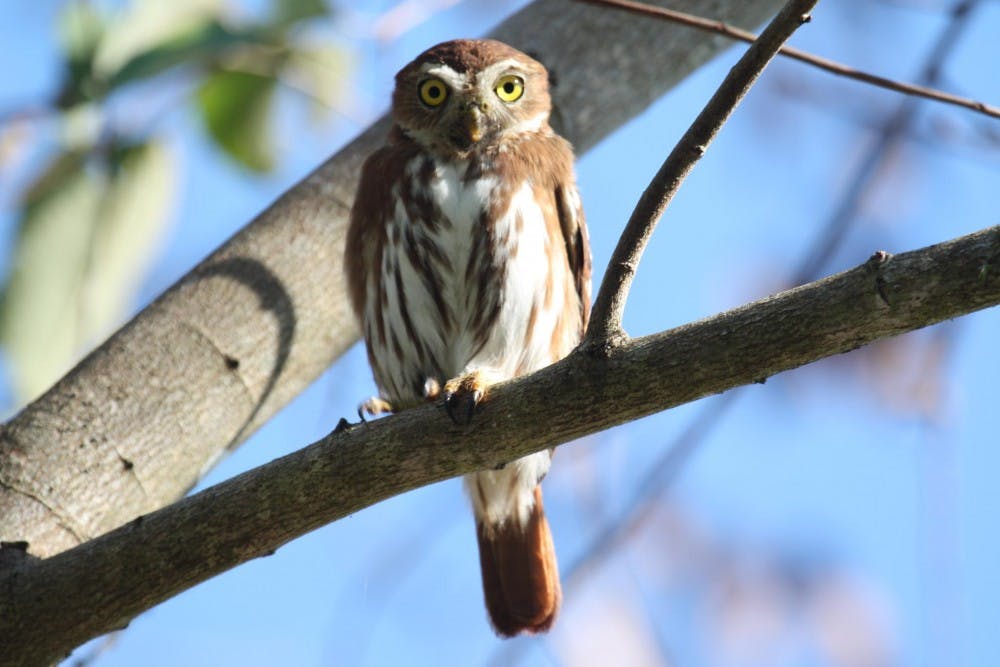Although the controversy over whether or not to extend the 650-mile border wall between the United States and Mexico largely centers around immigration, it is also important to consider the effects a wall would have on the environment of the borderlands.
A New York Times article reported that if U.S. President Donald Trump’s plan to extend the wall to 1,000 miles succeeds, it will divide areas where no natural barrier currently exists. This would separate habitats and prevent many animal species, even those that can fly, from crossing the border.
According to the Times, a U.S. Customs and Border Protection policy says that the agency “will integrate environmental stewardship and sustainability practices into operations and activities.”
It is expected that more than 1,500 native animal and plant species would be affected by the wall, including 62 listed as endangered or vulnerable, according to an article published in BioScience in 2018.
Typically, the Endangered Species act would require projects as large in scope and potentially environmental impactful as the border wall to undergo extensive analysis, investigation of alternatives, and continued monitoring afterwards. However, construction of the border wall will be exempt from these regulations, allowing for the possibility that the wall will significantly disrupt native species.
There are many possible effects of a border wall extension on the environment of the borderlands. Three will be explored in this article: the division of landscapes, the cutting off of animals and the disruption of wildlife refuges.
Along U.S.-Mexico border, one can find some of the nation’s most diverse landscapes, which house more than 1,500 native animals. These include six separate ecoregions, ranging from desert scrub to forest woodlands to wetland marshes, both freshwater and salt. A border wall could potentially put these habitats at risk because of the soil erosion a wall would cause, as well as the alteration of natural water flows and the patterns of wildfire.
The border wall will be designed to keep humans from crossing; however, it will also be a barrier for local animals. While ingenious humans could design new ways to go past the wall, four-legged animals would be left helpless.
Aaron D. Flesch, a research scientist at the University of Arizona, told the New York Times that even some low-flying birds like the ferruginous pygmy-owl could have trouble crossing the impending border.
“You think a bird’s just going to fly over a wall, but that’s not necessarily the case,” Flesch said.
Additionally, this division would limit the resources available to the animals by preventing them from finding food and mates in the areas blocked by the border wall.
The extended border could leave endangered animals with already small populations stranded on either side of the border. Such animals include the Mexican gray wolf and the Sonoran pronghorn. This could potentially lead to some species being more likely to die out.
“For a critter that’s nearly extinct in the U.S., you need to promote connectivity, not curtail it,” Flesch said.
While Trump has proposed a wall that incorporates bollards, or slats, this could still disrupt wildlife, according to Flesch. These spaces would allow smaller animals to pass through, but larger animals would still be affected. Permeable vehicle barriers already built in some areas can create “behavioral barriers” to animals that naturally avoid fences. This includes species like the Sonoran pronghorn.
According to National Geographic, seven Texas wildlife conservation areas, which include the Lower Rio Grande Valley National Wildlife Refuge and Big Bend National Park, could potentially be sites for the extended border wall. These areas are celebrated as locations for ideal night sky viewing, due to their remote locations. The National Butterfly Center is another refuge that would find itself affected by the construction of a border wall. This 100 acre sanctuary is home to more than 200 butterfly species, and the plans for the border wall might separate about 70 acres from the American side, leaving 70 percent of it in Mexico.





